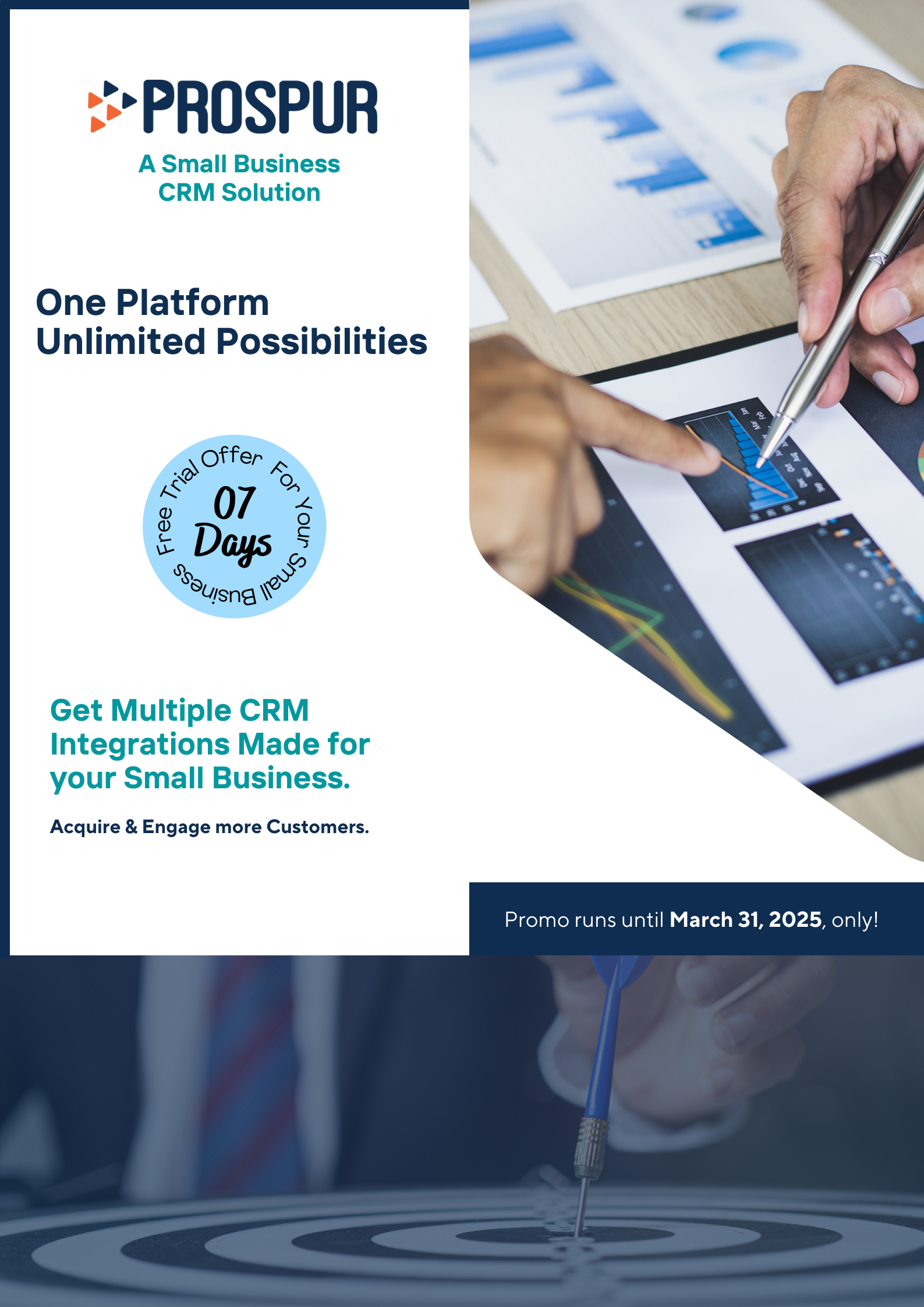The Future of CRM in 2022 and Beyond
Editorial StaffDecember 10, 2022

Accelerating revenue growth and driving productivity are perhaps the two most important goals of any organization. But we need to look deeper into the details of the factors that make this happen.
And this is where a customer relationship management (CRM) system shines out. According to research, 59% of customers consider tailored experiences based on past interactions are very important to winning their business.
79% of the customers don’t mind sharing their information with the company for relevant services.
Businesses understand these statistics and the role of a CRM system in fully leveraging the value. And it is no surprise that the CRM market is set to grow at 13.7% CAGR through 2022 and beyond.
8 Future CRM Trends for Sales and Marketing Teams:
Here are some future CRM trends for sales and marketing teams –
#1. Marketing & Sales Teams Share the Same Goals & Tools
Businesses achieve success when they make their clients’ goals their own. This includes aligning the KPIs in the CRM system such that it meets the overall business strategy.
Once the marketing teams gain the attention of the customer, they pass the leads to the sales teams to close the deal.
When both the marketing and sales teams have the same CRM strategy with centralized touchpoints in a single system, the sales funnel becomes a natural path for customer progression toward deal closure.
#2. Get More Leads with Personalization
Statistics show that 56% of B2B organizations use the data from a CRM to assist in their content marketing strategy. This is because one size does not fit everyone. CRM helps gather customer behavioral data from –
- Support tickets
- Event registrations
- Email open rates
- Product demos
- Meetings
- Content downloads
These and many more insights give the business a 360-degree view of all their customers – current and prospective.
Marketing teams use this data to make customer profiles and understand who is out there to purchase the product or service the company offers. CRMs are helping scale the human touch and reduce treating customers as objects.
Businesses can strike a balance between knowing too much and too little about a customer to serve better while protecting privacy.
#3. Artificial Intelligence is the Future
AI is making inroads into corporate analytics, automation, and APIs through conversational user interfaces (UIs).
It helps B2B businesses in their marketing processes and communications, and in developing data-driven business models in CRM systems. According to surveys, AI has made significant improvements in –
- Brand building (92%)
- Lead generation (86%)
- Customer acquisition (84%)
- Upselling (79%)
- Customer retention (85%)
- Customer advocacy (82%)
Chatbots and business model predictors provide lead data directly to the marketing and sales teams, thus eliminating manual work. AI is automating manual work, thus making the business more efficient.
Business intelligence (BI) is one of the major CRM trends shaping the future. Analytics, big data, machine learning, and artificial intelligence are fueling the fast-growing data-driven CRM applications.
#4. Price Optimization
Predictive analytics, AI, and machine learning are also redefining how businesses optimize their pricing. CRM applications help businesses differentiate pricing by customer, market, buying history, and personas.
Out of these strategies, personas for determining customer-centric attributes are showing the most significant potential.
#5. Integrate Self-Servicing into Existing Channels
Self-servicing systems such as chatbots that connect directly with the CRM system give customers answers to their questions quickly.
Chatbots collect the data and feed it into the CRM system so that the marketing team can better understand the needs and tailor their strategies accordingly.
Survey statistics show that 70% of customers prefer self-servicing over speaking to a customer care executive. Here are some other statistics to take notice of –
- 75% of customers say that self-servicing is a convenient way to address issues.
- 91% of respondents want to use an online knowledge base tailored to their needs.
- 40% of callers contact the customer service center only after looking for answers via self-service.
By integrating self-servicing systems into existing channels such as messengers, mailing services, call services, whiteboards, payment gateways, and chatbots, you can predict customer needs and automate further communications.
AI-based contact management saves time and optimizes resources resulting in valuable engagement with the customer.
#6. Mobile CRM is Fast Becoming an Essential
Companies need to access their CRM system at unexpected places and times. The office is not the only place to gain more business and sell the product.
Mobile CRMs are helping businesses gain new business at events, on-site meetings, and social media mentions.
Mobile CRMs allow greater flexibility for sales and marketing professionals to be productive and accomplish targets without confining them to their desks. According to a survey, mobile CRM users saw –
- 87% improvement in sales.
- 74% increase in customer satisfaction.
- 73% improvement in business efficacy.
#7. Embracing Social CRMs
Social CRMs allow your customers and prospects to lead the conversation, which is against the ethos of traditional marketing but is essential in the digital world.
Using social media, businesses can engage with a diverse range of leads. According to a survey, 97% of customers on any website are anonymous and not from the company’s CRM system.
Social CRMs integrate with various channels and gather new insights for lead generation and brand awareness.
#8. Faster Onboarding
Future CRMs do not need you to sit and learn the system for hours before you can start working.
Simplified and intuitive functionalities within the system reduce the time spent learning and onboarding the employees for faster results.
Intuitive dashboards let you immediately focus on what is important and not waste time on warm or cold leads.
You can collaborate with other team members, access information from the knowledge management (KM) system quickly, and control at which stage each team member is.
Features to Consider in Your CRM:
CRMs come tailored for different businesses. A CRM for an e-commerce company may differ from that of a travel company. Here are some of the trending features that you should look for –
- The CRM should automate multiple processes (for example, lead collection, segmentation, reporting, social media integration, invoicing, and more).
- Track all interactions over calls, emails, social media chats, WhatsApp, and contact forms.
- Customized alerts that integrate with the calendar and any other applications your teams use.
- Advanced data analytics and reporting.
- Cloud-based system for easy access over laptops, mobile phones, and tablets.
Conclusion:
Customer satisfaction has replaced customer experience as the top metric in sales. To meet customer-centric goals, CRMs are evolving with greater precision and predictive analytics to meet their needs.
The dynamics of customer satisfaction in quickly winning over the customer experience, and CRM of the future is aligning to meet customer-centric goals.
The focus of a sales representative in B2B and B2C businesses is shifting from just closing the deal to providing the customer with the best solution according to their requirement.
APIs are fast redefining cloud platforms, starting with their integration with enterprise applications. CRM directly impacts revenue growth and will continue to outpace other technology transformations within enterprises in the future.
Prospur provides a CRM platform for small businesses to acquire, engage, and retain customers and close more sales. Click here for a FREE Demo to learn – how Prospur can help you grow online.

